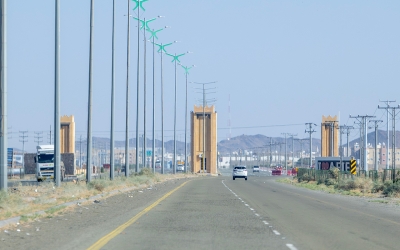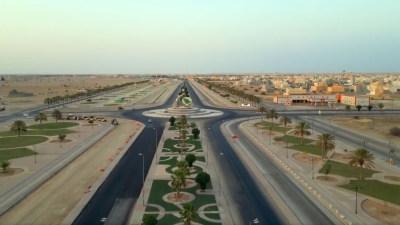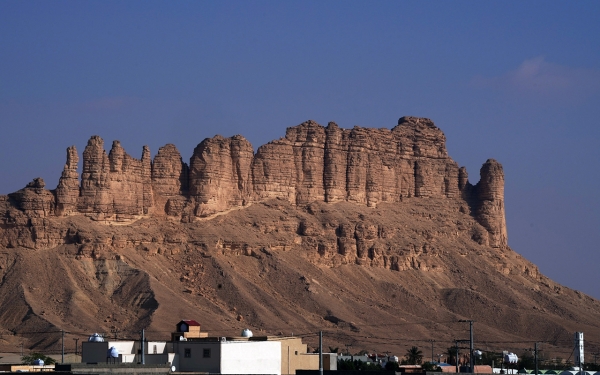
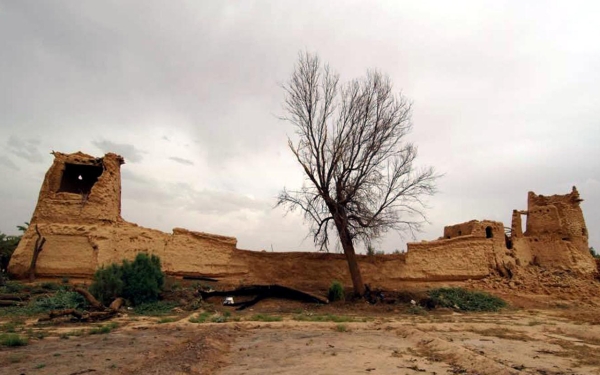
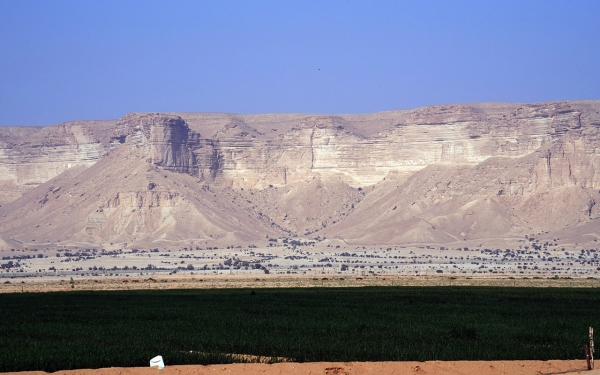
Dhurma (romanized: Muḥāfad͟hat Ḏurumā) is a governorate in the Riyadh Province in the Kingdom of Saudi Arabia. It is located between latitude 26° 43' 24" north and longitude 50° 03' 46" east and is sixty km west of Riyadh. It covers an area of 2,060 km and is bordered by al-Washm to the west, Dirab and Tuwaiq to the east, and al-Muzahimah to the south. It extends for more than a hundred km distance between al-Hair and Marat.
Services in Dhurma Governorate
The region's Emirate has prioritized delivering various services to Dhurma, such as education, health, housing, electricity, water, environment, and agriculture. This is due to Dhurma being considered a suburb of Riyadh and an essential contributor to easing traffic congestion that has accumulated in the area in 2020.
Fertility of the lands of Dhurma governorate
Dhurma has long been known for its fertile lands and ample groundwater, particularly its abundance of palm trees, fruits, and grains, which earned it a reputation for producing high-quality wheat. It is famous for cultivating wheat, barley, dates, vegetables, and fruits. Most of its crops are grown using modern agricultural methods supplying the main markets of Riyadh.
Dhurma Governorate's history
Dhurma Governorate has a rich history as it has been the site of many prominent events in the country's development. The founder of the Second Saudi State, Imam Turki bin Abdullah, hailed from this region. Additionally, the people of Dhurma played a key role in the unification of the kingdom under the leadership of King Abdulaziz Al Saud. Situated in the al-Aridh region of Najd, Dhurma is the second-largest town and served as the first line of defense for Diriyah during the formation of the Kingdom.
Antiquities and tourism in Dhurma Governorate
The Dhurma Governorate boasts several historical sites, such as al-Fargh Palace, also known as the Imam Turki Bin Abdullah Palace, made of clay and believed to be over three centuries old. Another prominent structure is the Bihawamih Palace, which has been standing for more than two hundred years. Towards the south entrance of Dhurma, you can find the ancient village of Qarqara and its historic market, dating back to the ninth century during the Abbasid era. Furthermore, the area is home to the historical al-Ghaziz wells.
Dhurma is classified as a Category (B) province based on the level of civil services in the governorate. It administratively includes seven centers and is inhabited by approximately twenty-six thousand people.
Dhurma Governorate fascinates poets
Dhurma Governorate takes on a longitudinal shape, bordered by Tuwaiq Mountains to the north and northeast, as well as the eastern and southeast directions. This beautiful landmark has fascinated poets with its captivating obelisks, columns, and nose-shaped peaks. The pre-Islamic poet Amr ibn Kulthum was inspired to sing its praises, and it has been celebrated by prominent Arab poets such as al-A'sha, Jarir, Yahya ibn Talib al-Hanafi, and Ya'qub al-Hamawi.
Related quizzes
Related articles

